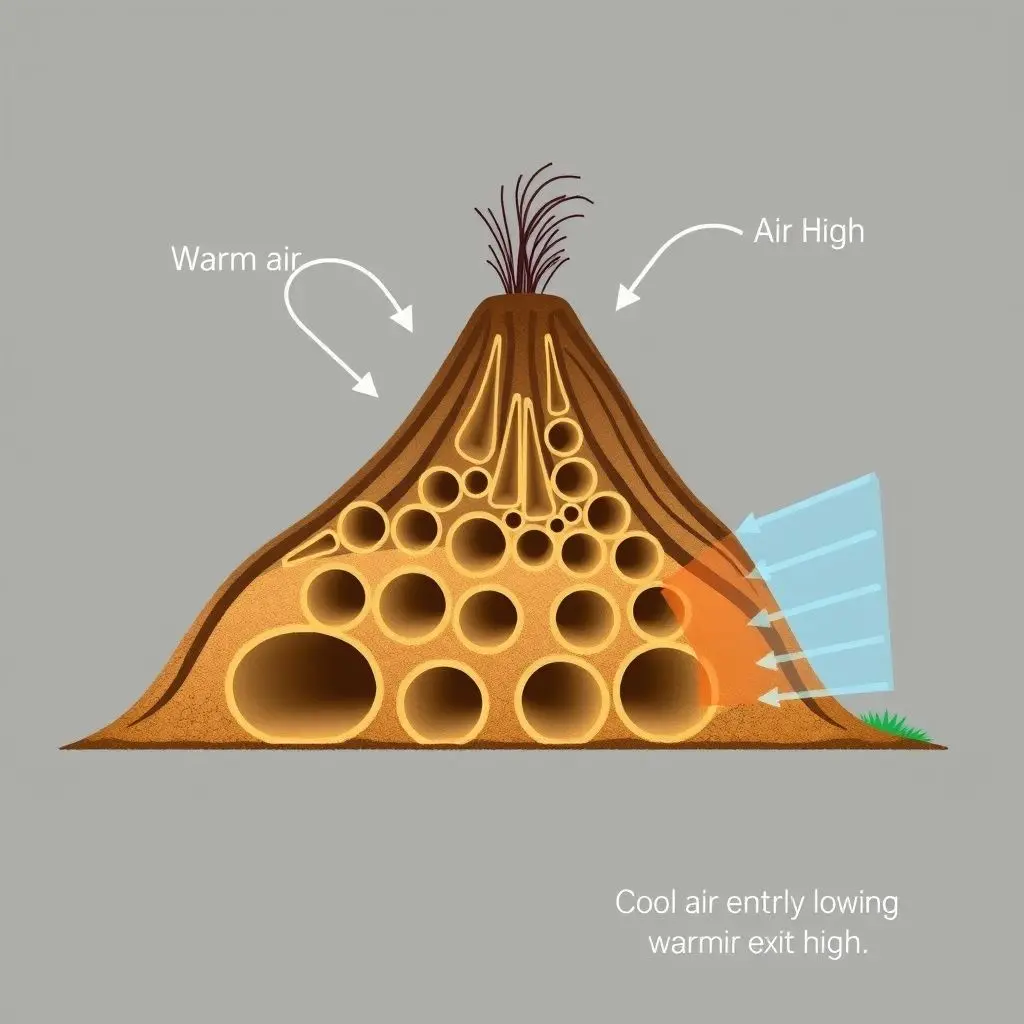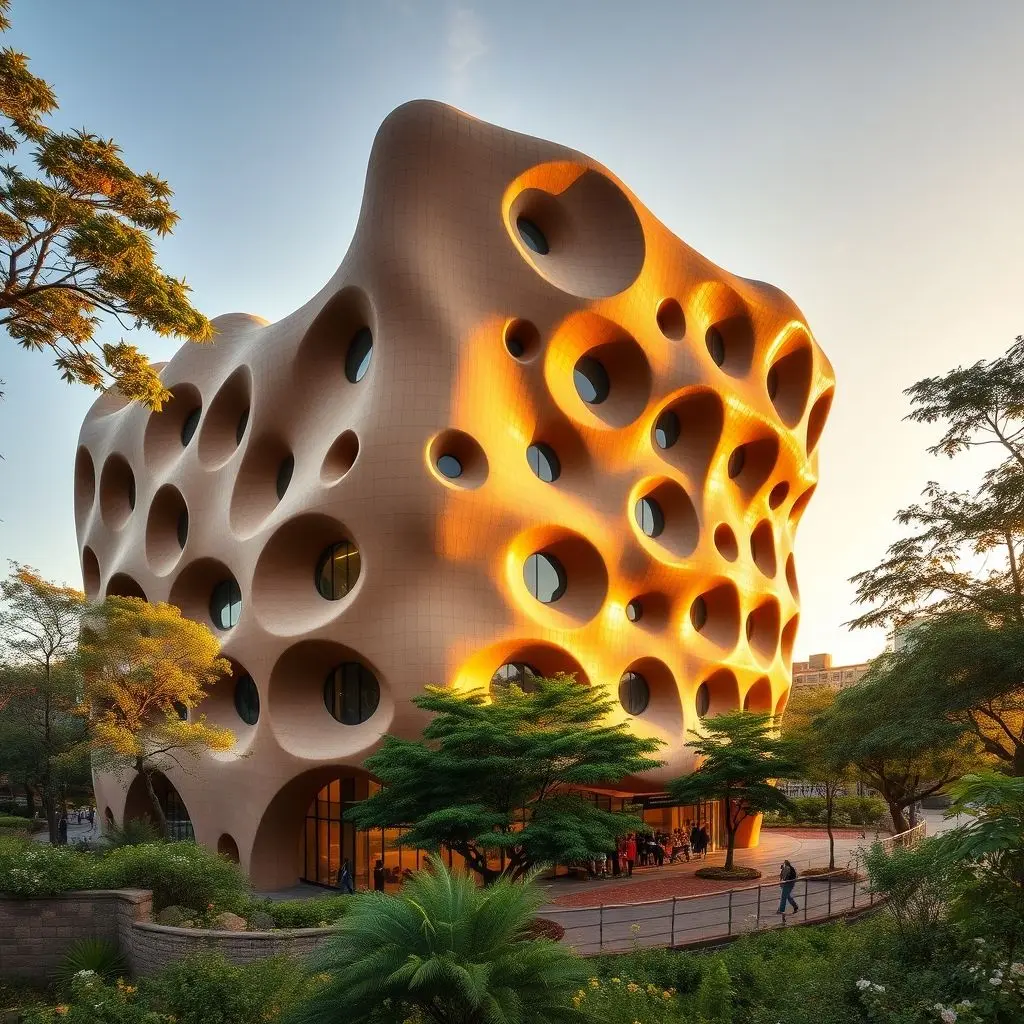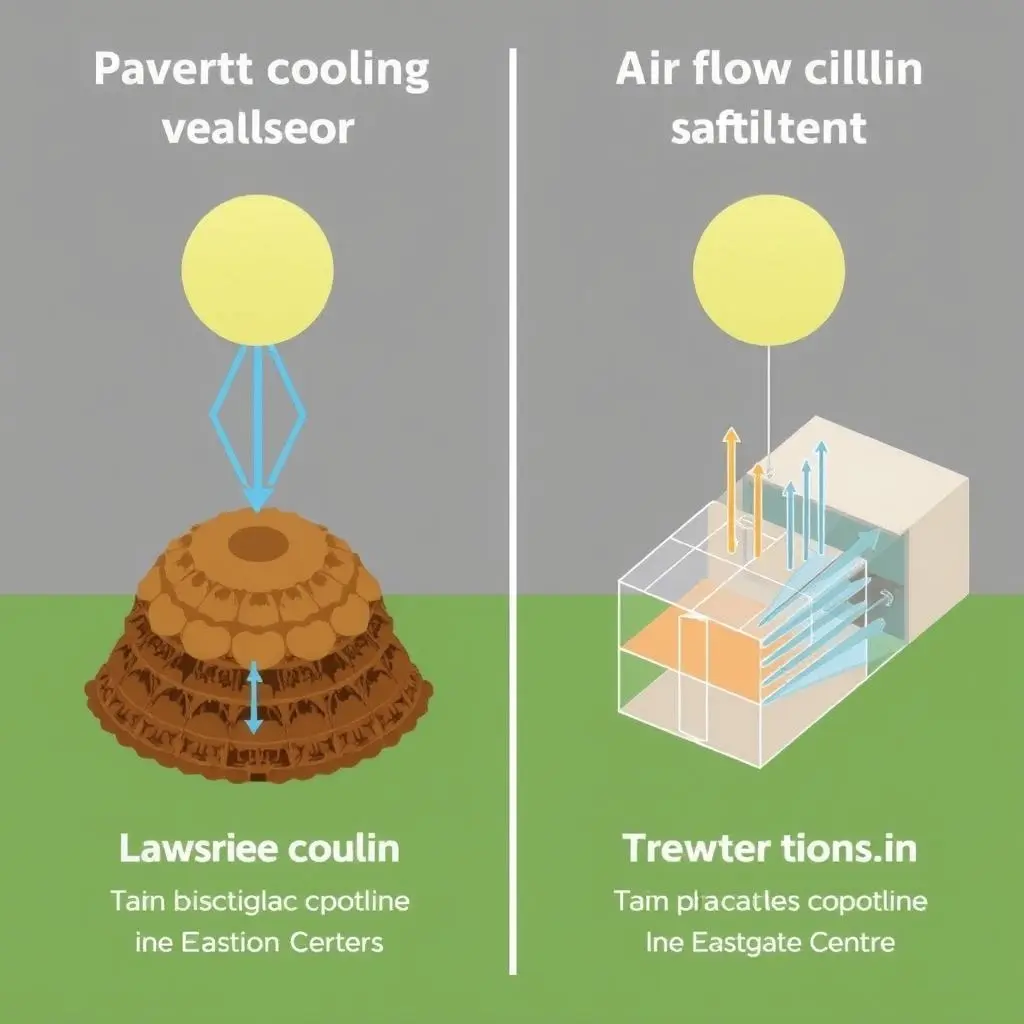Imagine stepping into a building on a sweltering day, feeling a comfortable coolness wash over you – not from the blast of an air conditioner, but from the building itself breathing. Sounds like science fiction? What if we told you the blueprint for this innovative cooling system comes from creatures no bigger than your fingernail? You heard right: termites. These humble insects, often seen as pests, are master architects whose ancient earth mounds hold secrets to modern sustainable design.
This incredible concept falls under the umbrella of biomimicry – the practice of observing and imitating nature’s time-tested forms, processes, and ecosystems to solve human problems. And when it comes to beating the heat without massive energy bills, nature, in the form of a termite mound, offered a remarkably efficient solution.
Table of Contents
The Original Earth-Based Air Conditioner: The Termite Mound
Termites, particularly species like the Compass Termite (Amitermes meridionalis) or African mound-building termites, build colossal structures relative to their size. These mounds can stand meters high, often in environments with extreme temperature fluctuations between scorching days and cool nights. Inside these structures live millions of termites, along with a fungus garden they cultivate. Both the termites’ metabolic activity and the fungus produce heat and moisture. Maintaining a stable temperature and humidity within the mound is critical for the colony’s survival and the fungus’s health.
So, how do they manage it without any external energy source?
The key lies in the mound’s sophisticated structure and the physics of airflow.

Anatomy of a Self-Cooling Mound
- Dense Walls: The outer walls are incredibly thick and made of earth and termite saliva, providing significant thermal mass. This mass absorbs heat during the day and releases it slowly at night, dampening external temperature swings.
- Network of Tunnels: The interior is a complex labyrinth of tunnels of varying sizes. There are large central shafts and a network of smaller tunnels closer to the surface.
- The “Lung” or Ventilation System: Air circulates through this network. Cooler air is drawn in from vents low down on the mound, often connected to underground tunnels where temperatures are more stable. As this air moves through the mound, it is warmed by the colony’s activity and rises into larger central chimneys. This warmer, lighter air is then expelled through vents located at the top of the mound.

This continuous convection cycle acts like a natural pump, regulating both temperature and CO2 levels inside the mound. The moist air from the fungus garden also plays a role; as it rises and cools near the surface tunnels, water can condense, releasing latent heat and further contributing to the stable internal temperature.
It’s a marvel of passive engineering – using natural principles like convection and thermal mass to create a stable, habitable environment without any moving parts or external energy input.
From Mound to Masterpiece: The Eastgate Centre
Architects and engineers have long admired nature’s efficiency, but it was the observation of termite mounds that directly inspired a groundbreaking building project in Harare, Zimbabwe. The Eastgate Centre, designed by architect Mick Pearce in conjunction with Arup Associates, is a large office and shopping complex completed in 1996.
Pearce was specifically looking for ways to build a large commercial property in Harare’s warm climate without resorting to a conventional, energy-guzzling air conditioning system. He found his answer in the local termites.

How Eastgate Mimics the Mound
The Eastgate Centre’s design incorporates several biomimetic principles borrowed from the termite mound:
- Thermal Mass: Like the dense earth walls of a mound, the building uses concrete, a material with high thermal mass, to absorb and store heat.
- Natural Ventilation Network: The building has a complex system of vents and chimneys. Air is drawn in from the outside, often through shaded areas, circulates through the building’s interior, and is then expelled through chimneys at the top.
- Automated Control: While the principle is natural airflow, the Eastgate Centre uses a computer system to open and close vents throughout the day and night. This system monitors internal and external temperatures, mimicking the way termites might adjust their mound’s openings, to optimize airflow for cooling and ventilation. At night, the building “purges” heat absorbed during the day by opening vents wide.

The result? The Eastgate Centre uses less than 10% of the energy for HVAC compared to a conventional building of its size in Harare. This translates to significant cost savings and a much smaller environmental footprint. The indoor temperature remains comfortable year-round, typically between 22°C and 24°C (72°F – 75°F).
The Power of Looking Down (Way Down!)
The success of the Eastgate Centre is a powerful testament to the potential of biomimicry. It shows that some of the most effective and sustainable solutions to complex human challenges might already exist in nature, perfected over millions of years of evolution.
Curious to see this tiny engineering marvel in action? Check out our quick short below!
(Replace YOUR_VIDEO_ID with the actual video ID provided: fAym16l5-l0)
Beyond temperature regulation, researchers are exploring how termites manage humidity, material properties of their mounds for strength and permeability, and even their social organization for insights into building complex systems. The lessons aren’t limited to large buildings; principles of passive cooling and natural ventilation can be applied to homes and other structures.
Why This Matters for a Sustainable Future
Heating, ventilation, and air conditioning (HVAC) systems are massive consumers of energy globally. Finding ways to reduce or eliminate the need for conventional AC is crucial in the fight against climate change and for creating a more sustainable built environment. Biomimicry offers a pathway to achieve this by tapping into nature’s inherent efficiency.
The story of termites and the Eastgate Centre reminds us that innovation isn’t always about inventing something entirely new. Sometimes, it’s about observing, understanding, and respectfully borrowing from the most successful designer there is: Mother Nature.
Frequently Asked Questions
What is biomimicry in architecture?
Biomimicry in architecture is the practice of designing buildings and communities by imitating the forms, processes, and systems found in nature. This can range from mimicking structural shapes (like bone strength) to thermal regulation strategies (like termite mounds) or even ecosystem functions (like wastewater treatment).
How do termite mounds stay cool naturally?
Termite mounds use a passive ventilation system based on convection. Cooler air is drawn in through lower vents, circulates through internal tunnels, is heated by the colony and fungus, and rises to be expelled through upper chimneys. This natural airflow, combined with the mound’s thermal mass, maintains a stable internal temperature and humidity.
What is the Eastgate Centre and how is it related to termites?
The Eastgate Centre is a building in Harare, Zimbabwe, whose passive cooling system was directly inspired by the ventilation principles of local termite mounds. It uses concrete’s thermal mass and a network of natural airflow channels and vents, managed by a computer system, to regulate its internal temperature with significantly less energy than conventional buildings.
Is biomimicry commonly used in modern building design?
While not yet standard practice everywhere, biomimicry is a growing field in architecture and engineering. The Eastgate Centre is one of the most famous early examples, but architects and researchers worldwide are increasingly looking to nature for sustainable and efficient design solutions.
What are the main benefits of termite-inspired cooling?
The primary benefits include significant energy savings (reducing reliance on HVAC), lower operational costs, reduced carbon footprint, enhanced indoor air quality through natural ventilation, and improved thermal comfort for occupants.
Finding Big Ideas in Little Things
The narrative of the self-cooling building, born from observing humble termites, is a powerful metaphor. It underscores the immense value of biodiversity, not just for ecological balance, but as a vast library of innovative solutions waiting to be discovered. As we face increasing environmental challenges, perhaps the most intelligent designs for our future cities and homes are already perfected, living and breathing all around us, sometimes even right beneath our feet.





